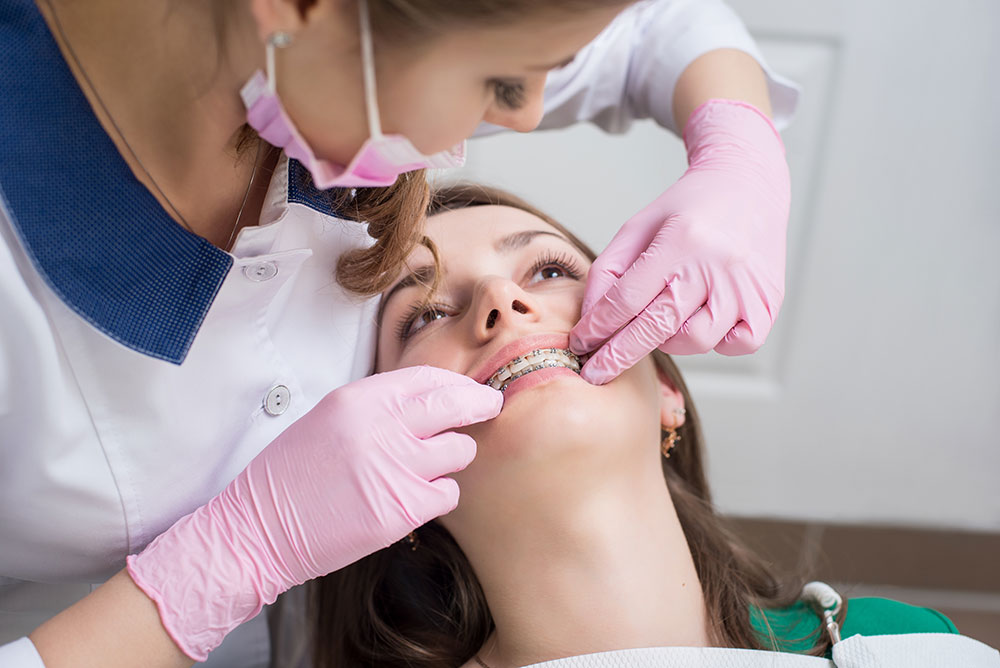The Basic Principles Of Legacy Orthodontics
Table of ContentsAll About Legacy OrthodonticsOur Legacy Orthodontics IdeasLegacy Orthodontics - Truths8 Easy Facts About Legacy Orthodontics DescribedUnknown Facts About Legacy Orthodontics
In enhancement, we provide flexible treatment timetables, versatile settlement options and a fun, enjoyable experience.An orthodontist is a dental professional trained to diagnose, protect against, and treat teeth and jaw irregularities. They fix existing problems and are trained to identify problems that may establish in the future. Orthodontists collaborate with people of any ages, from youngsters to grownups. Individuals commonly associate a perfect smile with healthiness.
Malocclusion, or misaligned teeth, can cause dental issues, including tooth decay, gum tissue disease, and hard or painful chewing. Not everyone is birthed with straight teeth. If you have a bad bite or large spaces between your teeth, you may wish to speak with a dentist focusing on orthodontic care.
Some Known Factual Statements About Legacy Orthodontics
( Photo Credit: DigitalVision/Getty Images) Orthodontists make use of dealt with and removable oral gadgets, like dental braces, retainers, and bands, to transform the position of teeth in your mouth. Orthodontic treatment is for oral irregularities, including: Crooked teethBite issues, like an overbite or an underbiteCrowded teeth or teeth that are as well much apartJaw misalignmentThe goal of orthodontic therapy is to improve your bite.
A healthy bite guarantees you can consume, chew, and talk correctly. While you may believe of orthodontists as generally for children or young adults who need braces, they can correct oral problems at any type of age. Orthodontists participate in university, dental school, and orthodontic school. After graduation, they invest 2 or 3 years in an orthodontic residency program.
All orthodontists are dental professionals, however not all dental practitioners are orthodontists. Orthodontic residency programs offer intensive, focused direction for dental experts. They concentrate on 2 locations: Just how to properly and safely relocate teeth Exactly how to correctly lead advancement in the teeth, jaw, and faceOnce an orthodontist has actually finished training, they have the alternative to come to be board certified.
Rumored Buzz on Legacy Orthodontics
Misalignment, or malocclusion, is the most typical factor people see an orthodontist. It is genetic and is the outcome of dimension distinctions between the upper and reduced jaw or between the jaw and teeth. Malocclusion leads to tooth congestion, an irregular jaw, or irregular bite patterns. Malocclusion is typically treated with: Your orthodontist connects metal, ceramic, or plastic square bonds to your teeth.
Some people require a headwear to assist relocate teeth right into line with pressure from outside the mouth. A retainer is a customized device that maintains your teeth in area.
They're frequently utilized on children. They can produce added room in the mouth without needing to draw teeth. If you have a significant underbite or overbite, you may require orthognathic surgery (additionally called orthodontic surgical treatment) to lengthen or shorten your jaw. Orthodontists use cords, medical screws, or plates to sustain your jaw bone.
You might need to see an orthodontist if you have: Crowding or otherwise adequate space for every one of your teethOverbite, when your upper teeth come your bottom teethUnderbite, when your bottom teeth are as well much forwardSpacing or concerns with gapsCrossbite, which is when your top teeth fit behind your base teeth when your mouth is closedOpen bite or a vertical void between your front base and top teethMisplaced midline, when the facility of your bottom and upper teeth do not line up Fixing a dental malocclusion can: Make biting, chewing, and speaking easierImprove the balance of our face and your total appearanceEase pain from temporomandibular joint disordersDifferent your teeth and make them much easier to clean, aiding prevent dental cavity or cavities It's frequently a dental expert who initially notifications misaligned teeth throughout a regular exam.
The Ultimate Guide To Legacy Orthodontics

Throughout your initial orthodontic consultation, you'll likely have: he has a good point An oral examPhotos taken of your face and smileDental X-raysPanoramic (360 degree) X-rays of your face and headImpressions to produce molds of your teethThese examinations will aid your orthodontist recognize exactly how to wage your treatment. orthodontics. An orthodontist is a dentist who's had training to treat your teeth and jaw
An orthodontist is focused on your bite, so something like a damaged tooth would be dealt with by a dental professional. Orthodontists are concentrated on your bite, or the way your teeth fit together, and the straightness of your teeth.
Ever questioned just how stars constantly appear to have flawlessly aligned teeth? Orthodontists are oral specialists who concentrate on dealing with abnormalities in the teeth and jaws.
Legacy Orthodontics Fundamentals Explained

, orthodontists have a varied toolkit at their disposal. These tried-and-true braces use a system of brackets adhered to the teeth and attached by cables.
Clear aligners, like Invisalign, are a prominent option for individuals seeking a more discreet treatment option. These removable trays are personalized to progressively shift the teeth's setting. Headwear might be utilized in conjunction with dental braces or aligners to apply additional targeted forces, especially for dealing with jaw disparities. In instances of narrow jaws, palatal expanders can be used to produce area for appropriate tooth alignment.